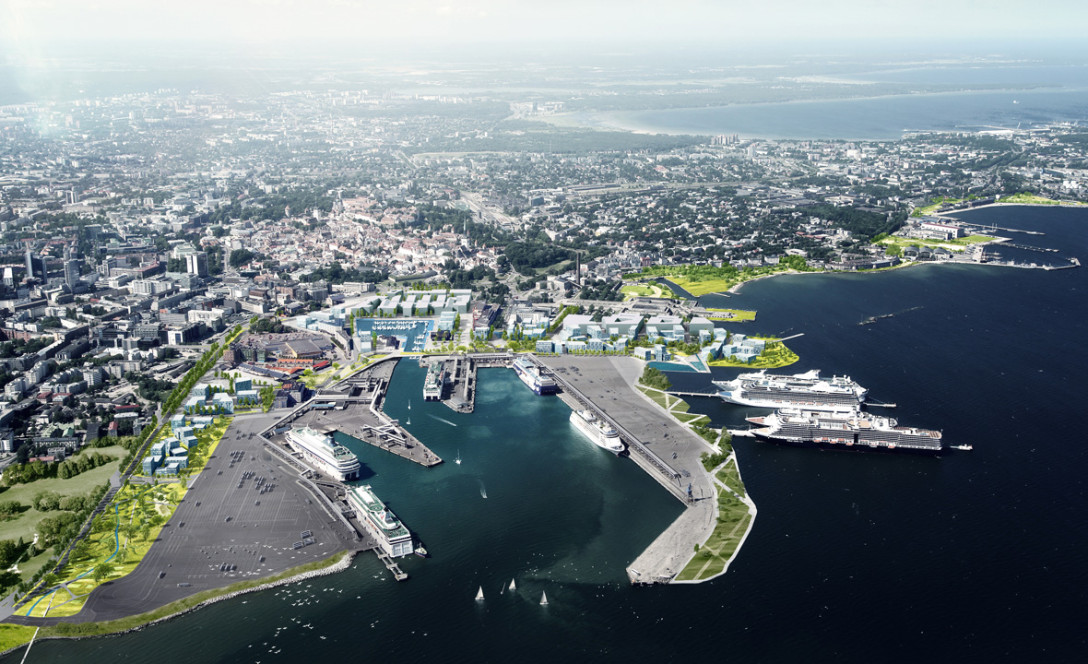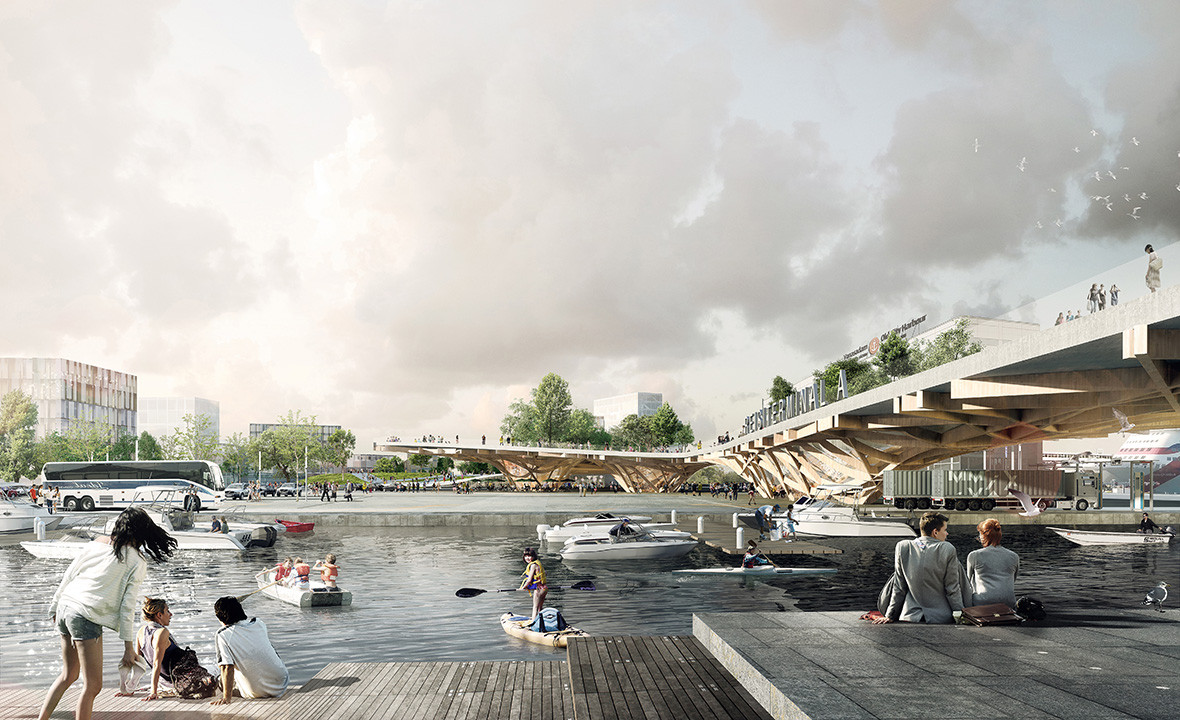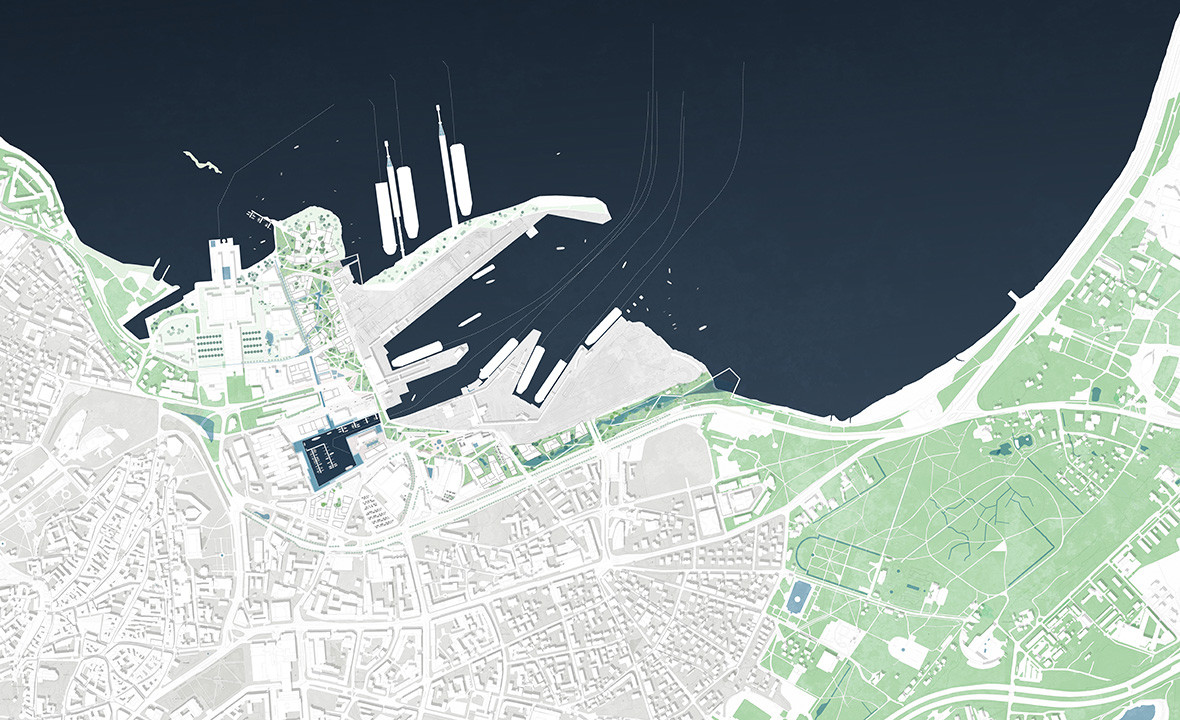


In collaboration with Terroir architects, Karres en Brands developed a master plan for the old city harbor of Tallinn. The Port of Tallinn selected a total of six teams to take part in this ambitious international competition, aiming to reconnect the harbor to the city center and provide a better infrastructural solution for the many different functions that the harbor will hold in the future. The competition provided a unique opportunity to define a completely new type of urban precinct at the gates of Tallinn, to rethink the notion of city harbor and set the benchmark for similar sites in the world.

Across the years, Tallinn has had an ever changing relationship with its harbor and the waters. The rough, industrial edges of the harbor remained closed to the public for a long time and today, heavy infrastructure is dominating the main entrance to Tallinn. The city and its harbor have turned their backs to each other and the desolate space in-between them, leave the many cruise tourists who arrive daily, with a poor first impression of the city. By introducing a new bridge between the two terminals we can break the infrastructural barrier between city and harbour and efficiently solve harbour flows. City and harbour are once again connected and create a significant and iconic entrance to Tallinn: Third Space.

The new connection will be the ultimate synergy between infrastructure, city space and nature, impacting the entire coastline of Tallinn. Rising between the two terminals it will facilitate car loading flows alongside a public elevated park. Underneath, the spaces created will define new entrance plazas to the terminals and protected spaces for functions and tourist flows, providing a whole new entrance experience to the city.

The Third Space meanders through the site from east to west to create a completely new type of Waterfront Park. It will facilitate movement for both leisure and harbor related flows and mediate the relationship between the hard functional harbor and soft city life. A porous membrane of public spaces will reconnect the harbor, open up opportunities for new neighbourhoods and office space and guide pedestrian flows towards the city. It will be an ever-changing mosaic of public spaces and new program, that draw upon the identity of their surroundings.

The green/blue spine does not only link some of the most important cultural and public features of the city, but also reconnects Tallinn and its residents to the water and unlocks the potential for future development around the old city center and harbor. Lush green wetlands will buffer and clean the water. Meandering from east to west the new park will reconnect the entire northern coastline, a rich public coastline, which is today fragmented by the infrastructure of the harbor. It will boost the transformation of the harbor precinct of Tallinn and reveals a unique entrance gateway into Tallinn, where harbor and city grow side by side.

| Location. | Tallinn, Estonia |
|---|---|
| Assignment | Master Plan Old City Harbor |
| Size | 54 hectares |
| Construction | 2017 |
| Status | Competition entry |
| Client | Port of Tallinn |
| In collaboration with | TERROIR, BuroHappold |